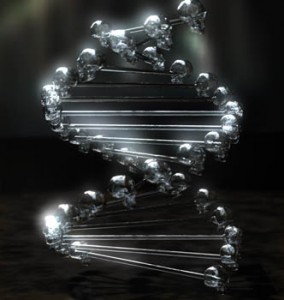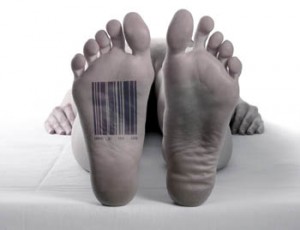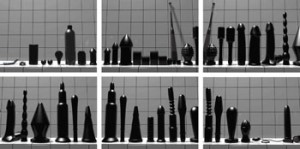« Features
Rachel Henriot: The Mutation of Identity
By Janet Batet
Now it appears clear. The spatial axis has been definitively replaced by the temporal axis, which establishes itself in our modernity as the only true tie that binds us to our contemporaries. Within this new errant experience that now confronts a global culture marked by constant flux (the flow of migration, travel, information, media and multi-referential culture, avatars, etc.), one can glimpse a vital concept: momentum.
It is within this constant flux that the individual has had to adopt zapping as a moderating mechanism of a structured experience based on flash and the ellipse. There is no other alternative; the bombardment is such that we have to let chance lead us by the hand, because if space is no longer a limitation, time is of the essence. It is within this logic that momentum enters. This concept borrowed from classical physics helps us understand how the contemporary cultural experience is structured.
Momentum is a vector whose intensity is associated with mass and velocity. Mass, extrapolated from the world of physics and inserted as a cultural tool, finds its equivalent in network. Network and velocity thus determine the reach of momentum, whose intensity is also associated with impulse (that initial thrust, that agitation that guides the logic of zapping, that random force that propels us in this or that direction).
In the midst of this emerging contemporary logic, we find the artistic production of Rachel Henriot, always focused on identity. It is a global identity and, as a consequence, unsteady and in perpetual transformation.
Henriot was born in Dijon, France in 1976. After studying the bass viol and dance at the conservatory, the artist turned toward the visual arts. Eager for new modes of expression, Henriot explored all the means within her reach, and especially new media. Automatons, prostheses, free form and interactivity generated a new universe that together with photography and video would structure the prolific discourse of Rachel Henriot.
Photography and video are the chief elements in Henriot’s oeuvre, in which she is almost always the protagonist. However, the autobiographical nature generally associated with the self-portrait does not typify Henriot’s work, whose model from the outset appears quite depersonalized. This is owing to the fact that this artist’s work is based on the investigation of contemporary identity, a changing identity, constantly being redefined, marked by momentum.
Her work is reflective of the information age in which aesthetic plurality and the simultaneity and juxtaposition of experiences affect the individual. He appears to disintegrate in the midst of a scattered reality. It is a reality that like an ever-changing kaleidoscope places at risk his very identity, which is in a state of perpetual transformation. As I warned at the beginning, identity is now subject to a new axis, the temporal axis which requires us to continually redefine ourselves.
Notably playing with this unstable notion of self is Effet de sérre (Greenhouse effect, 2003-2005). In it the artist presents herself in a frontal and closed view, her face covered with a plastic bag. Deformed by the force that the material exerts over her, the image becomes unrecognizable. From a symbolic point of view, we witness a mutilation of self: a silenced, suffocated, isolated identity. The plastic bag was chosen as a reference to a society dominated by consumption, where the self is dissipated in the midst of contrived exigencies orchestrated by the same consumer society that asphyxiates us.
If the chief constitutive element of Effet de sérre is photography, the end installation participates in the notion of plurality, juxtaposition and simultaneity so dear to contemporary culture. The faces split into two; they multiply generating a kind of overwhelming overabundance. Henriot uses all of the surrounding space to reinforce the idea of the media bombardment to which we are subjected day after day. The combination of different media is critical. Video, photography, typography and performance are integrated into the participative nature of the work where, through zapping, the observer navigates -or at least attempts to- the cadence and temporal logic of Effet de sérre.
The idea of identity atomized by a sordid consumer society is reaffirmed by the fragmentary notion of many of the images and texts that comprise the work, as well as by the carefully selected words: diet, work, lifting, discipline, programming.
Participating in this notion of mutant identity, the artist presents her first solo show Code Zéro (Zero Code, 2005). This series becomes the cornerstone, as the thesis it contains explains the artistic production of Rachel Henriot. The series is governed by the idea of the body as both container and expression of self and identity. Once again the image of the artist embodies the fragmentation and atomization of self, now through the bar code as an efficient symbol of a usurped, rejected, annihilated identity.
The bar code sticks to the person while standardizing, depersonalizing him and becomes a tattoo that we can no longer do without. In this series the fragmentary character dominates. We observe frames that, without giving it a second thought, mutilate the body in order to emphasize the serialized element to which the human being is definitively reduced in this series.
An atemporal feeling dominates, as if we were already - aside from the vortex that plagues the contemporary world - in a kind of limbo or purgatory. The bodies look like cadavers. Some even offer themselves up indifferently on the pathologist’s table, perhaps in a last-ditch effort to delve into themselves and find that silenced, ever-changing, elusive self.
At times the bodies appear like clones ready for reprogramming. An essential detail reaffirms this idea: the bar codes have still not been codified. It is only when the profile of the new entity is programmed in that the bar code will acquire physiognomy.
This idea of clone, cyborg, android is introduced as a theme associated with identity conflict in videos like Polymorphe (2003) and [Trans]mutation (2005), and once again taken up by Henriot in her series Usage Unique (Single use, 2005) and Unlimited (2006).
In Usage Unique the artist presents us with her photographic series of cases to be broken in the event of emergency. The simulacrum of pristine workmanship, urges us to break the glass only in the case of extreme necessity. The devices produced by the HUMAN Européen corporation (HUMAN European corporation) act as a final resort for the survival of mankind. “Yellow sunshine,” “Pur water” are some of the miracle products. At other times, prostheses - artificial replacement body parts - appear as the compensating elements underscoring the isolation of the human being.
[Trans]mutation is the consecration of prostheses. In this looped video, the artist, by means of unalterable traveling, takes us through an interminable inventory of sex toys. They all have the same black lacquer finish that reaffirms the artificial nature of same. These whimsical objects that adopt the most dissimilar shapes (grenades, ampoules, shell casings) look like obelisks, mysterious standards of an undiscovered culture. The macabre link between sex and death - underscored by the innumerable elements that refer to war - emphasizes the idea of the annihilation of a species and its conversion into something else.
ADN Skull (DNA Skull, 2007-2008) functions as a synthesis of all of Rachel Henriot’s production, while at the same time raising it to a new level. Here Henriot once again takes up the notions of time, identity and duality birth-death. The intracellular scale is taken to a macro scale. The sinuous nature of the structure itself and the use of skulls at each end of the segments that make up the genetic chain evoke identity issues. In turn, it compels the conscious reinterpretation of the human being who now acts as his own demiurge. The piece is terrifyingly beautiful. Time appears suspended in a breath before this structure, container of our past and our future, a macabre carousel now in the hands of man.
Rachel Henriot’s oeuvre as a whole shares a surreptitious notion contrary to the one that fueled Marcel Duchamp. If for him an element taken from daily life was full of new meanings and inserted into the world of art, Henriot with her perverse nature creates objects that later infiltrate the world of consumption through the art market. Her artifacts are full of social commentary, provoking the necessary impulse, the flash that brings about the momentum that in Henriot’s specific case tries to arouse the social lethargy generated by the consumer society. We witness a nomadic work inasmuch as it can dispense with the art circuit as a means of diffusion and can - under the guise of a commercial product - infiltrate our daily lives through the Web, mechanical distributors, books, and others.
During the months of April and June, the Adler Bertin Toublanc gallery in Miami will host a solo exhibition of the photographic, sculptural and videographic oeuvre of this artist. This is the first time that Rachel Henriot’s work is to be shown in the United States.
Janet Batet: Independent curator and art critic. BA in Art History (University of Havana, Cuba); MA in Multimedia (University of Quebec, Montreal)
All images courtesy of the artist and Galerie Adler Bertin Toublanc





































